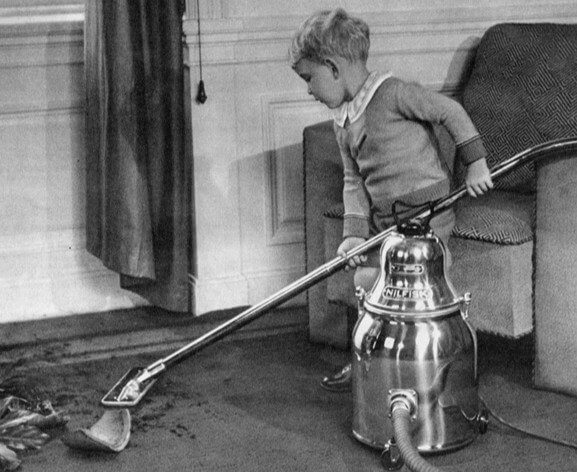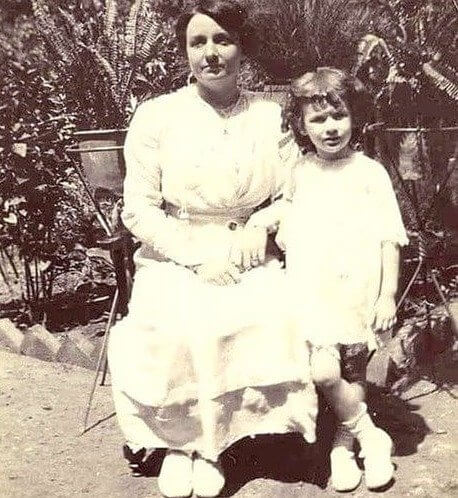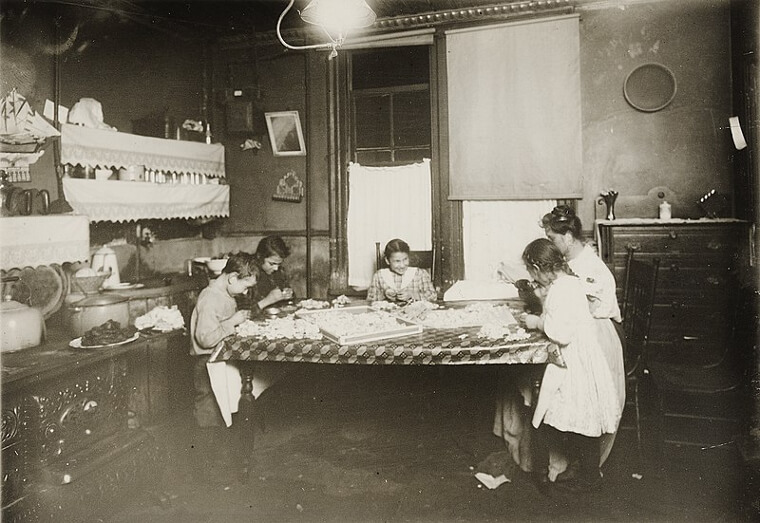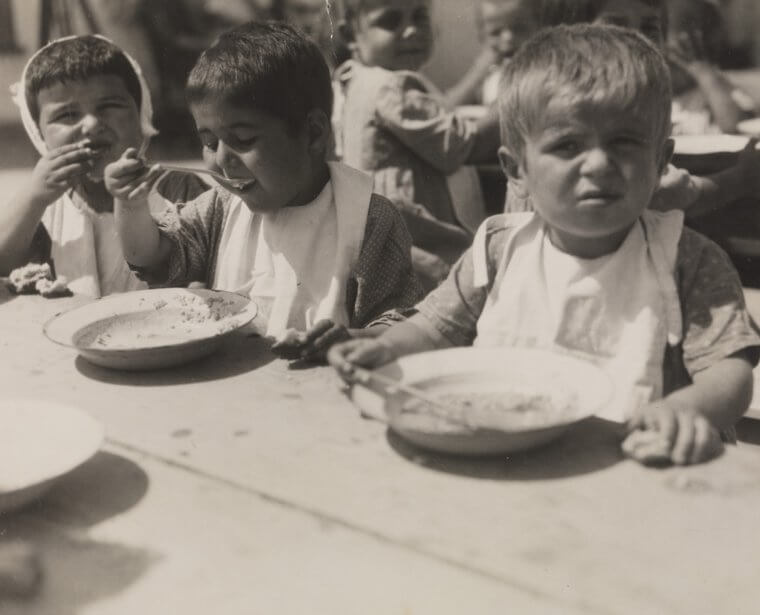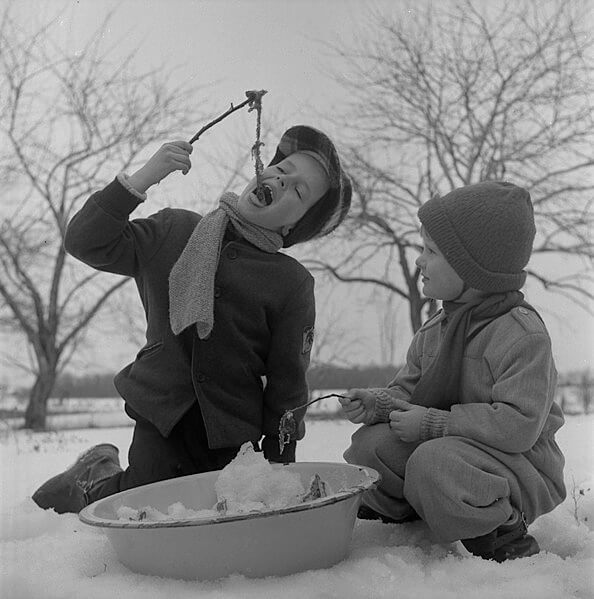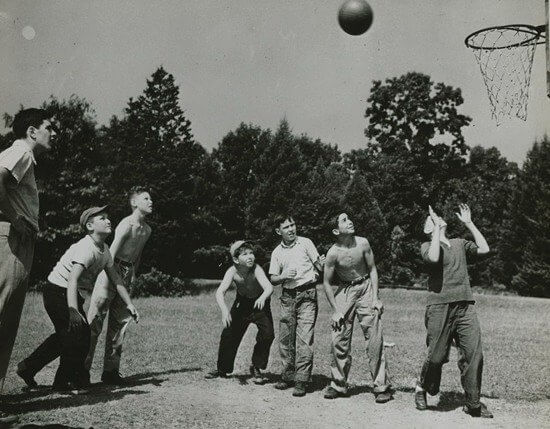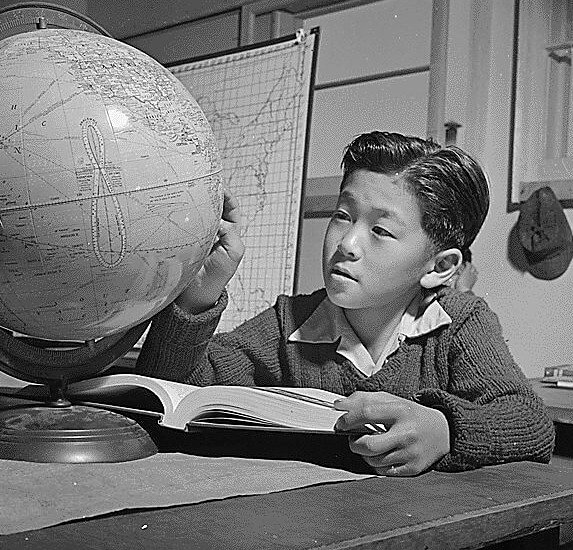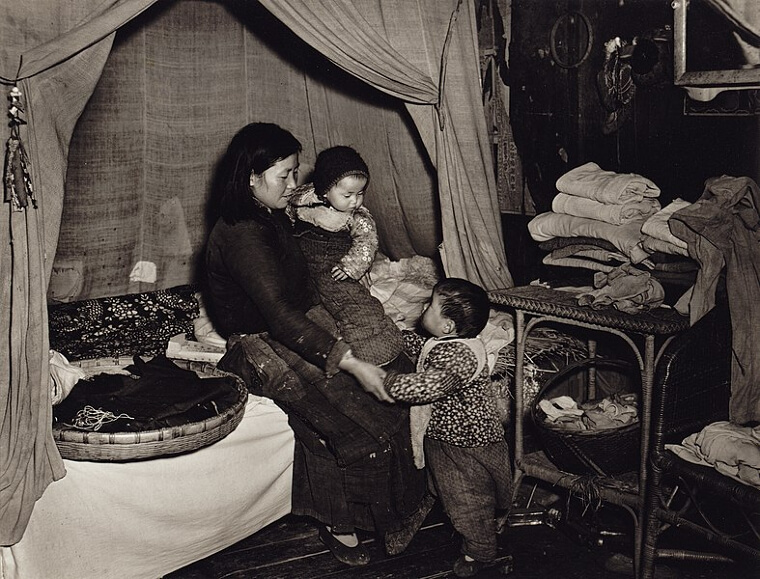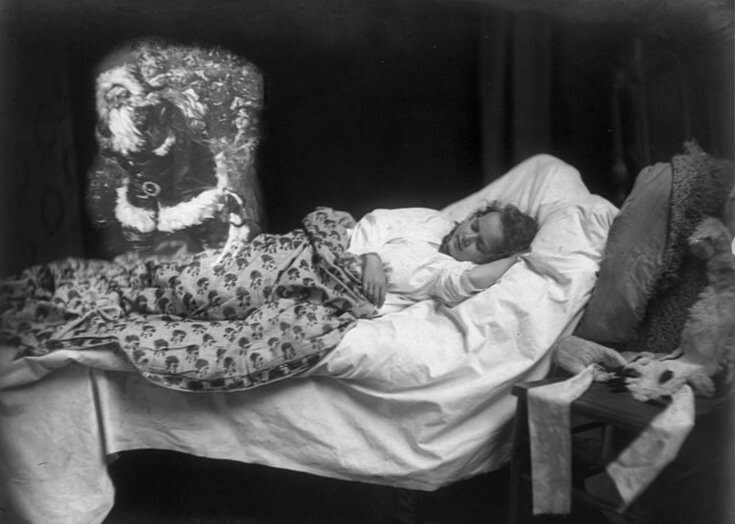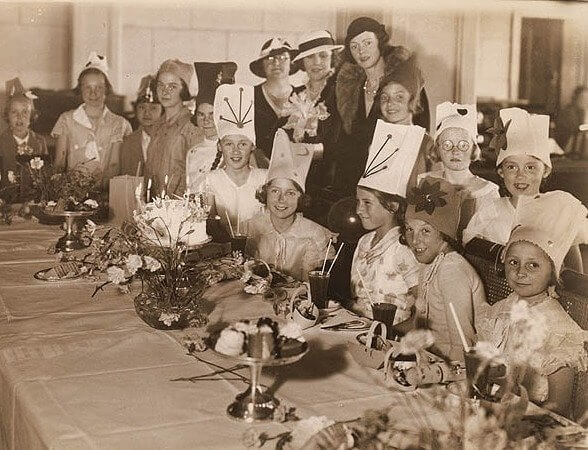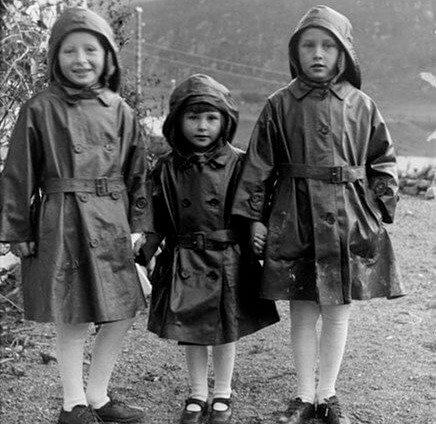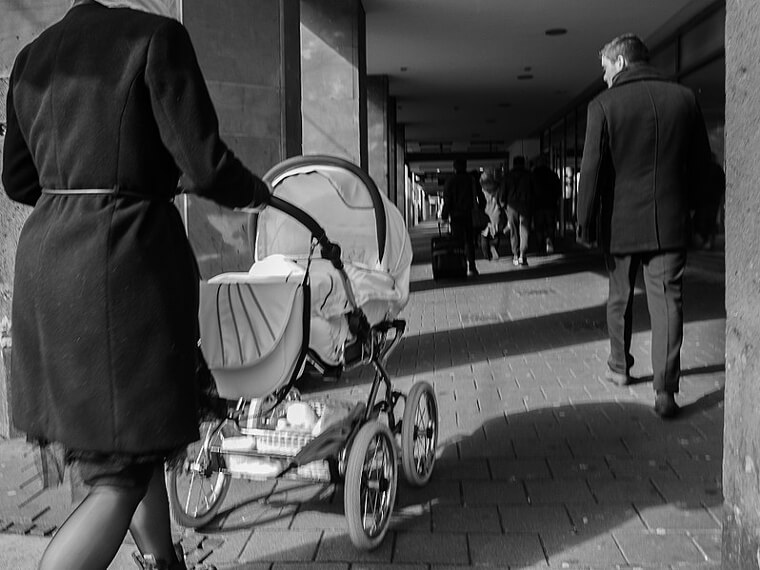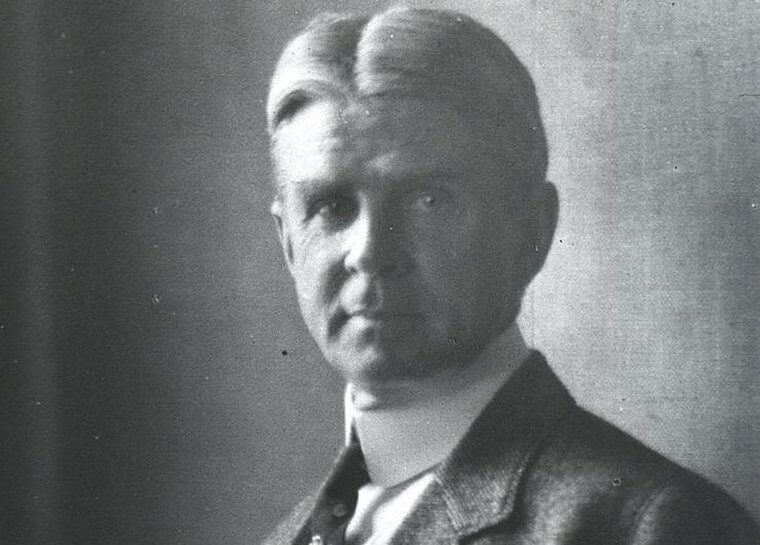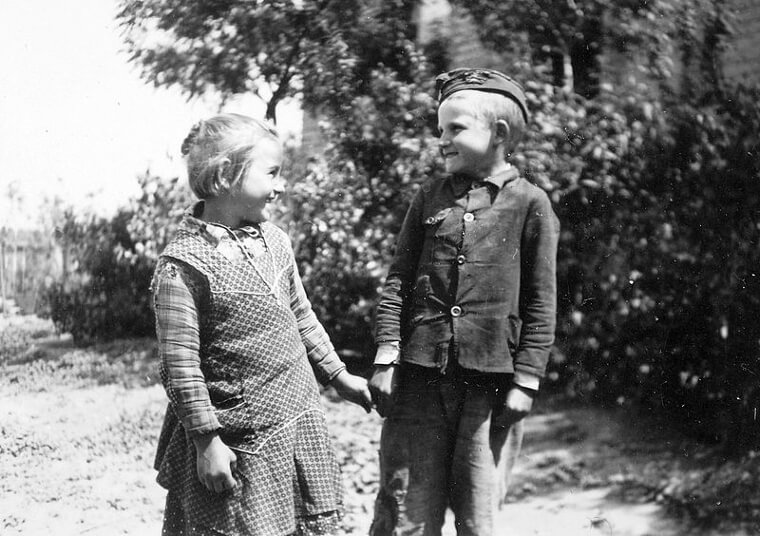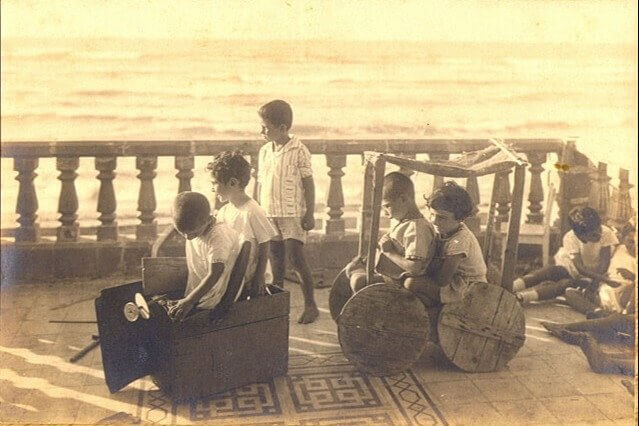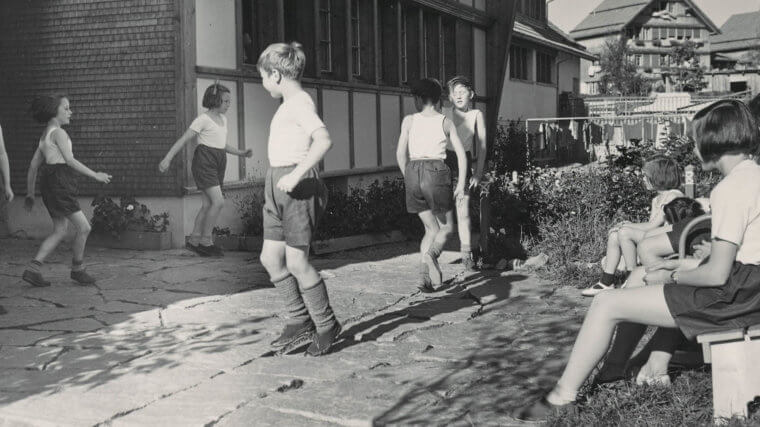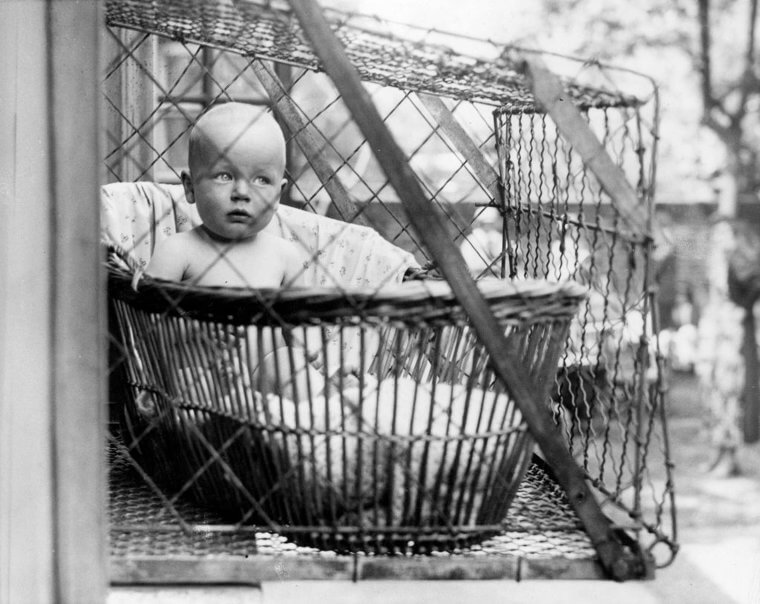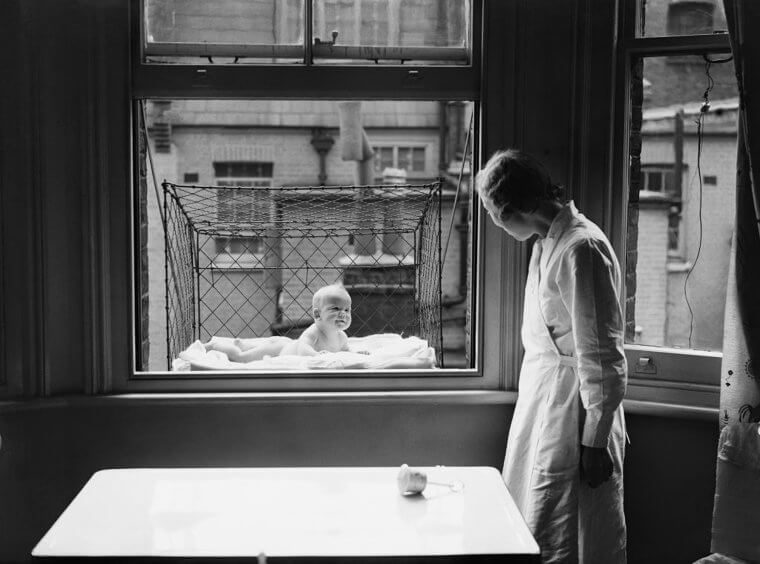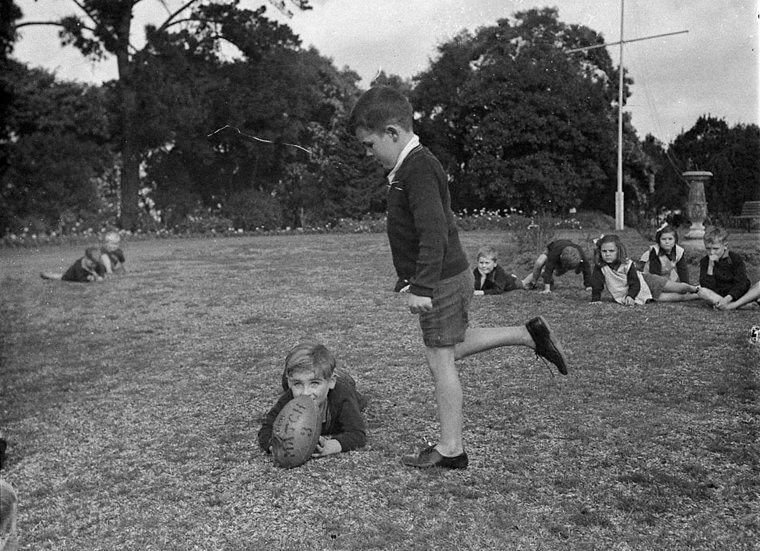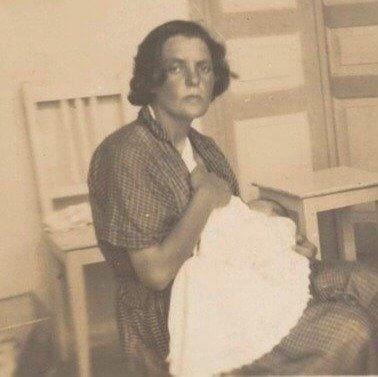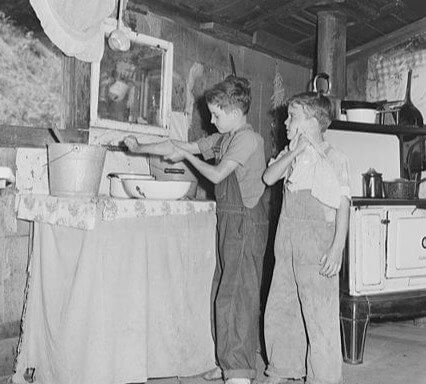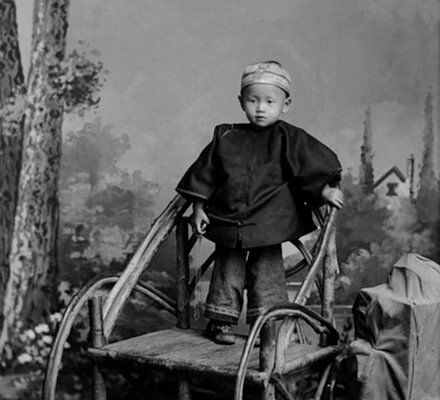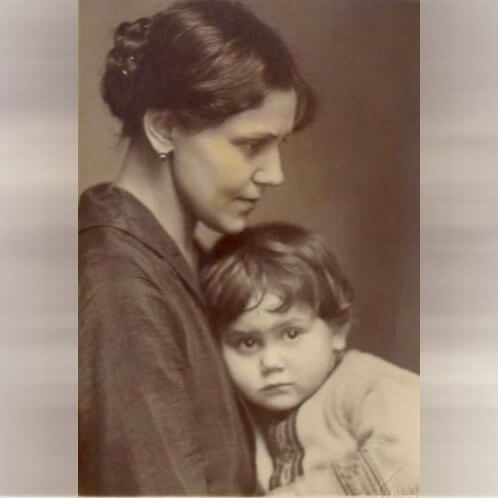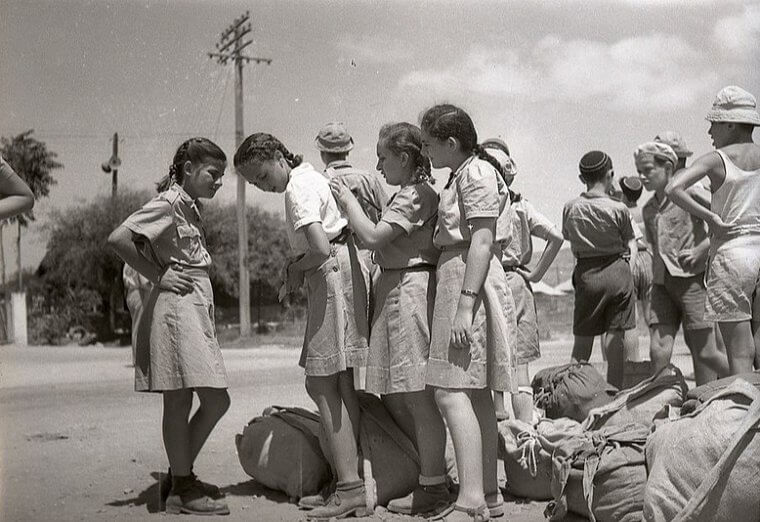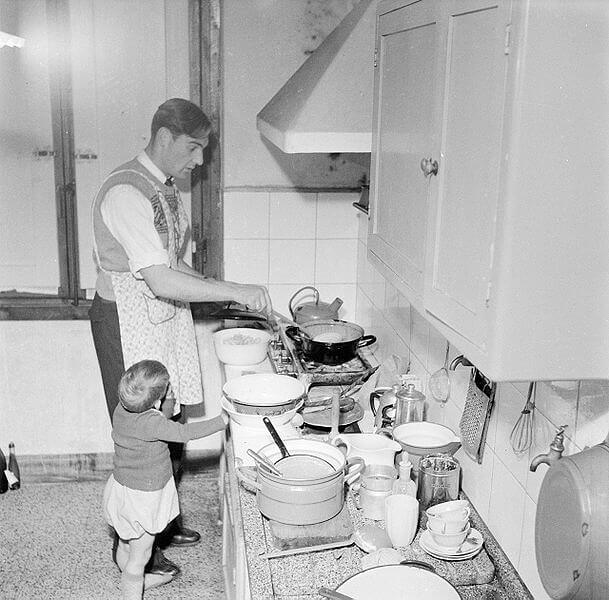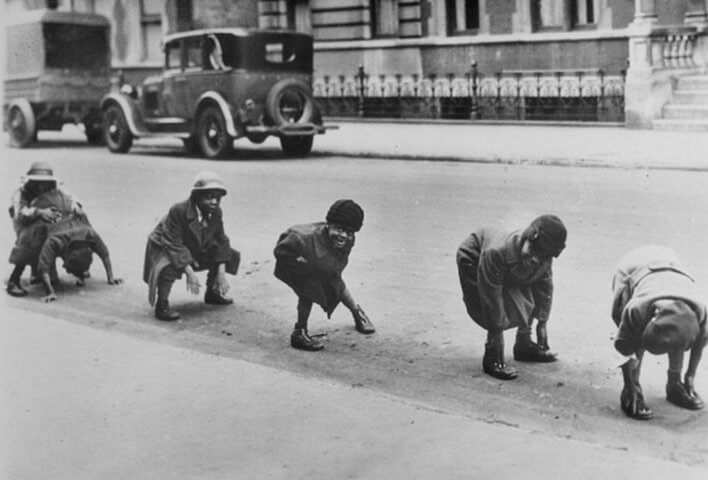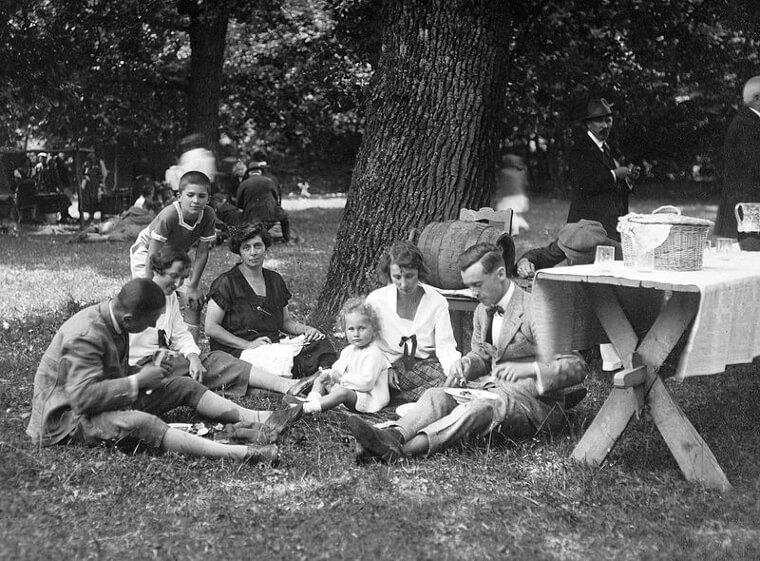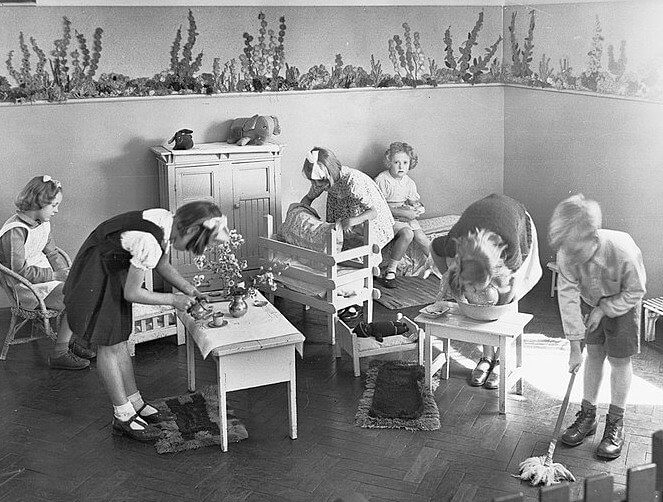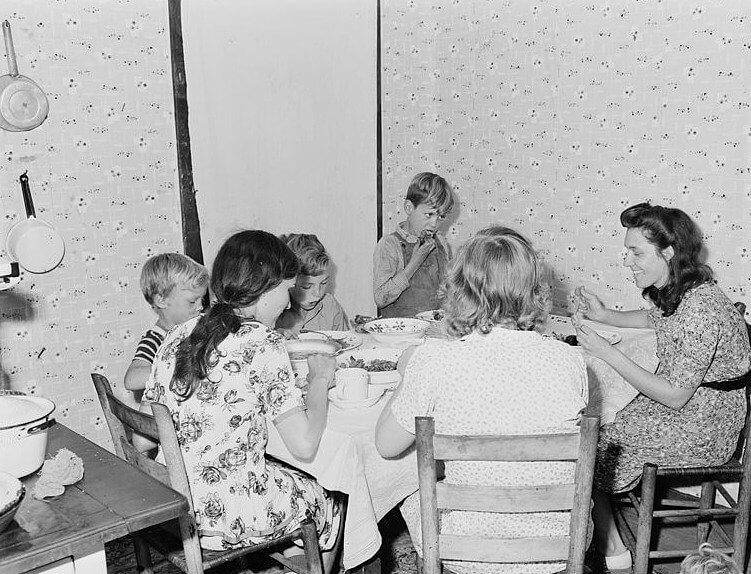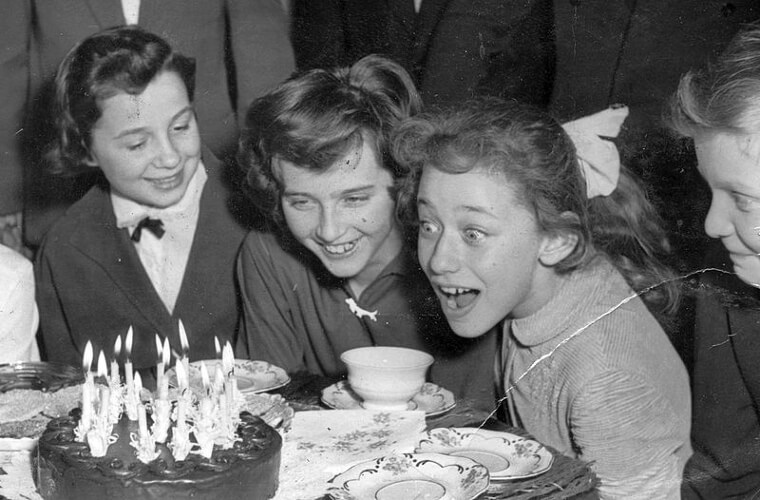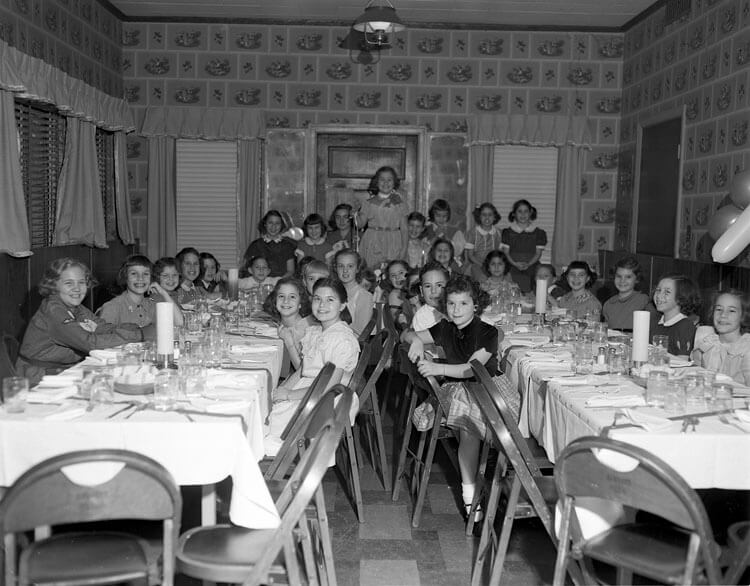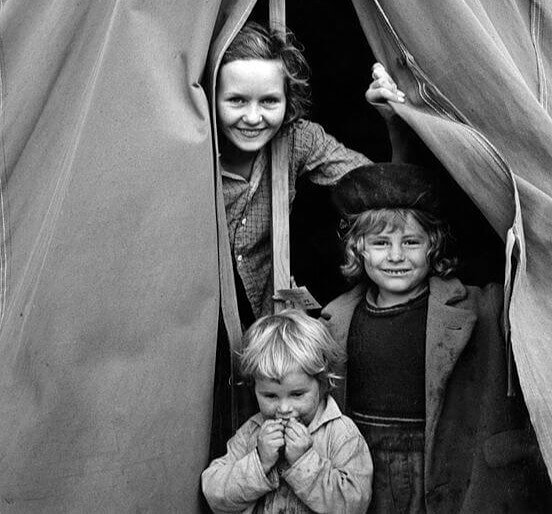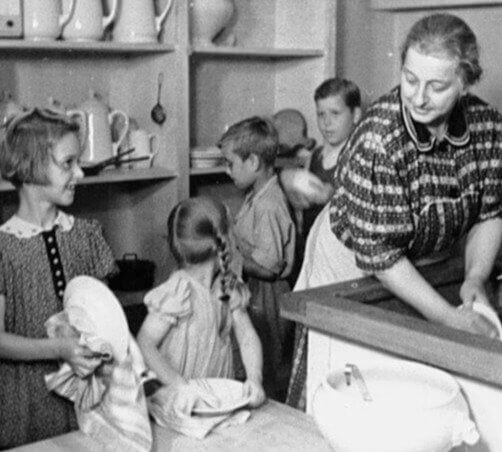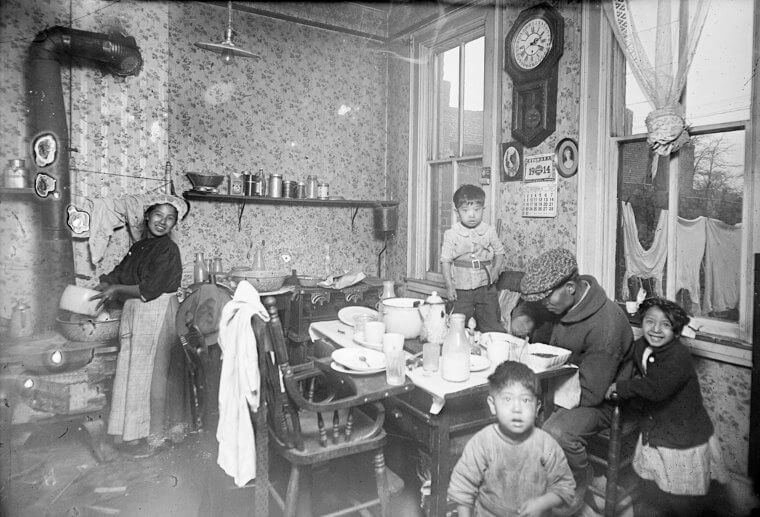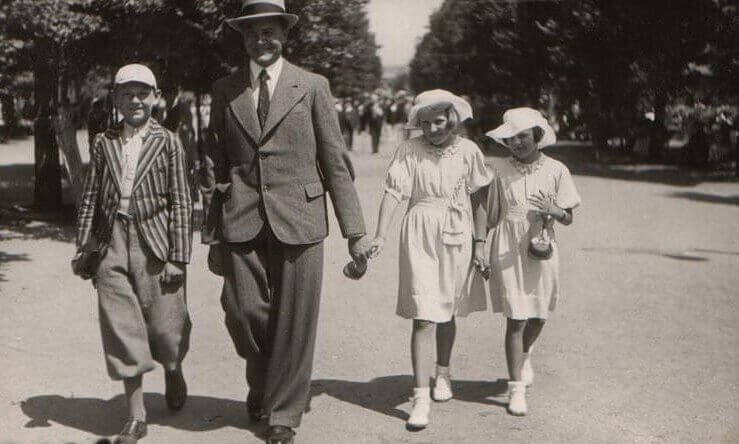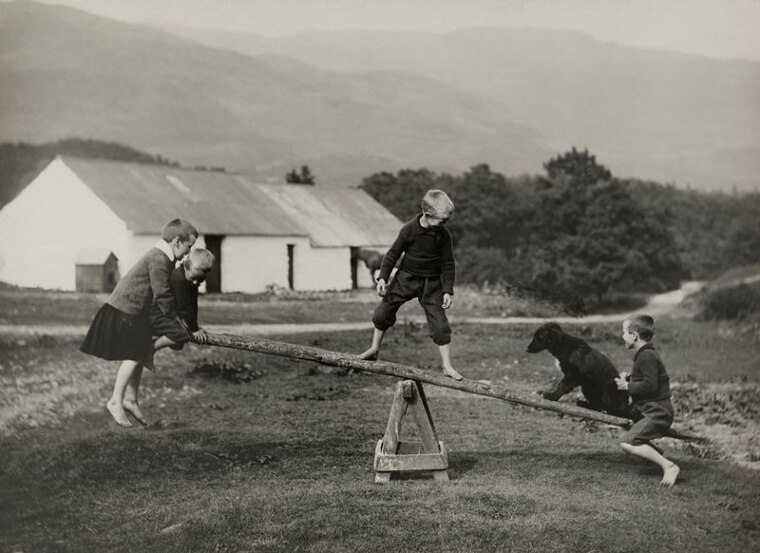Don't Hug or Be Affectionate With Your Kid
In the 1920s, there was a somewhat quirky parenting trend - a notable lack of hugging and physical affection. It was about the notion that too much love and tenderness might harm a child. Consequently, parents of that time often refrained from hugging, kissing, or comforting their crying babies, fearing that being too nurturing would lead to a spoiled child. This peculiar parenting approach mirrored the cultural norms and attitudes of the era.
It was definitely a time when more reserved parenting was the style. However, parenting has come a long way since then, and affection and emotional connection are known to be crucial for a child's healthy development.
Kids Must Clean the Whole Home
As children in the Roaring Twenties, household chores were to be completed on a regular basis. These tasks, such as vacuuming, lawn mowing, and dishwashing, were viewed as an essential part of growing up. In fact, some fortunate friends even received a small financial reward from their parents for doing a good job. These chores helped kids take on a significant amount of responsibility around the house, teaching important life skills.
Today, it may seem intense to have a small child clean your home, but back then, it was just a part of life.
Dressing up Children for All Occasions
During the 1920s, parenting trends focused on dressing children up for all occasions, even for everyday outings like going to the grocery store. The belief was that children needed to be presentable at all times to instill discipline and good behavior. Children were often seen in bow ties, fancy dresses, and patent leather shoes. While this may seem excessive and unnecessary to modern parents, it was considered a reflection of family values and status during that period.
Today, kids usually dress casually and in comfortable clothes that parents don't mind if they get dirty in, but this wouldn't have been acceptable years ago.
Perfect Posture Obsession
In the 1920s, parents and experts had an unusual obsession with perfect posture for their children. For them, poor posture meant poor morality. Consequently, parents implemented extreme measures to enforce perfect posture on their children. Strenuous games were prohibited, and posture courses and braces were introduced to promote good posture. The constant surveillance and correction of posture, even while kids were sitting at tables, became an unhealthy but common trend.
Today, we realize that perfection isn't everything, and a balance of healthy activities and rest can do more good than an extreme posture regime.
Babies Should Drink Black Coffee
Back in the day, our ideas about parenting were quite different. Believe it or not, there were so-called "experts" who suggested giving six-month-old babies black coffee to make them accustomed to adult eating habits. It's a bit funny to think about and sounds absurd today. These quirky parenting tips often emerged due to a lack of solid research and a heavy reliance on old-fashioned wisdom not backed up by any science.
When we look back, it's obvious how much our approach to parenting has changed. Just imagine giving a baby black coffee today! But it doesn't stop there; the further we delve into history, the more bizarre these practices become.
Being a Fussy Eater Wasn't Allowed
The concept of making separate meals for each family member was non-existent in the 1920s. It was common practice for parents to prepare a single dish for everyone at the dinner table, and there were no allowances for picky eaters. Children were expected to consume what was served or go to bed on an empty stomach. Compared to today, kids can eat different things for dinner depending on their preferences or allergies.
Being a fussy eater was seen as a weakness, and parents wouldn't allow their children to develop this habit, so they didn't give them a chance to choose a different meal!
Sending Kids on Long Walks to School Alone
In the 1920s, parenting took an unusual turn in the United States, as rural children were encouraged to travel great distances on their own to attend school. It was common practice for children to walk up to five miles or ride horses and buggies to their schools. This was considered an acceptable way to gain independence and receive an education. Public or school transportation was non-existent in rural areas, and parents saw it as a way for their children to develop a sense of self-sufficiency.
Looking back, it may seem like a harsh method, but for parents in the early 20th century, it was an act of love and trust in their children's abilities.
The Battle for Masculine Baby Names
There has been consistent worry about naming newborn babies through the years. Even in the early 1900s, there were concerns about the power and strength a name would project onto a child. The decade of the 1920s was no exception, and some experts believed that too much softness in a name would leave a child without a backbone. Parents’ biggest fear was their son becoming too soft, so they thought choosing names that projected masculinity was important.
While some still believe that there is power in a strong and masculine name, others understand that masculinity and strength come in many forms and that there's no need to conform to the stereotypes.
Washing the Walls Would Build Character
In the 1920s, parents were exploring unconventional methods to discipline their children. Some parents practiced a laissez-faire parenting approach, which allowed children to make their own decisions and learn from their own mistakes. Others, however, took it to a whole new level by creating bizarre housekeeping chores for their children to do. One example of this was having children wash their walls with soapy water every day or every week.
It was believed that it would teach them about the value of cleanliness and responsibility and keep the from becoming lazy.
Smearing Babies With Lard
In the early 20th century, a bizarre yet popular parenting trend existed where newborns were slathered in animal fat, known as lard. This odd tradition involved nurses applying a walnut-sized portion of lard across the infant's head and rubbing it thoroughly all over their tiny body, including special attention to the ears. The greasy substance was then wiped away with a damp sponge, leaving soft, supple skin behind. Despite its oddity, the trend gained popularity and became a routine before-bed practice for many families.
While it may seem repulsive, at that time, larding up was believed to provide protection and moisturize delicate skin, just like we would use lotion today.
Birthday Parties Were Kept Small and Simple
Parenting trends regarding birthday parties differed greatly from our modern-day traditions. The Great Depression caused families to downsize, resulting in smaller and less extravagant celebrations. Unlike today's extravagant affairs, most children only received recognition of their special day with a cake after dinner. Birthday parties often consisted of a few friends and simple games, if any at all. In some rare cases, children were treated to a movie with friends to celebrate their birthday.
In short, parenting then prioritized frugality and simplicity when it came to celebrating birthdays. However, weird parenting trends don't end here. Keep reading to learn styles from the 1920s that will make you question everything you thought you knew about raising children.
Children Should Sleep Facing North
A good night's sleep is every parent's dream, and it seems like we'll try anything to make it happen. But back in the 1920s, a parenting trend emerged that seems downright bizarre by today's standards. It all started in 1889 when a doctor named George H. Napheys claimed that infants should sleep with their heads facing north. He believed that the earth's electrical currents had some mysterious connection to our nervous systems.
Therefore, kids were encouraged to sleep facing north, and their beds were placed this way! Looking back, this might've been more superstition than science.
Bizarre Baby 'Airing' Trend
There's one parenting trend from the 1920s in particular that's the most chilling to merge from this time. Although it was rooted in good intentions, it was an unusual approach to ensuring your baby was healthy and growing. It's also something that, by today's standards, would be unacceptable and just freak people out. It all started with Dr. Luther Emmett Holt, an American pediatrician who was coming up with different parenting techniques.
He put together some ideas and research and insisted that parents try out this new technique when raising a baby.
Dr. Luther Emmett Holt's Influence on Child Health
In 1896, Dr. Luther Emmett Holt played a pivotal role in shaping parenting practices when he authored the book Diseases of Infancy and Childhood. While the book unquestionably reflected the norms of its era, it also contained a noteworthy message about the significance of children spending time outdoors. He stressed that fresh air could quite literally purify your child's blood and, therefore, keep them healthy and disease-free. So, how would parents ensure this?
Just let their kids play outside, right? But what about kids who were too small to play by themselves outside and unsupervised?
The Importance of Outdoor Play
Dr. Luther Emmett Holt believed that spending time outdoors was just as essential for a child's well-being and growth as having a proper diet. According to him, being in the open air had remarkable benefits. It could improve appetite, aid digestion, and give children rosy cheeks – all clear signs of good health. In a way, being outside was seen as a kind of universal remedy for various health-related issues.
Dr. Holt's ideas reflected the strong emphasis on outdoor activities during his time, highlighting their positive influence on children's overall health and development. Now, this isn't the weird part.
Don't Come Inside Until It's Dinner
In simple terms, Dr. Luther Emmett Holt's message boiled down to this: kids need to get outside to stay healthy. We know that's especially true in today's world dominated by screens, which kids are distracted by for hours on end. But this wasn't the case decades ago. Parents would let their children play in their backyard or with friends until it was nighttime so that they could absorb the daylight.
This was a reflection of a widespread understanding of how outdoor play positively influenced children's health. But people really started taking this to heart and took it to new levels.
Let Your Kids Play Outside Anywhere
Another reason playing outside was seen as the holy grail of that time was because, for the older kids, it instilled a sense of independence in them. Parents could trust their children to return home at a certain time and let them explore and play. Now, these are all good things and encouraged even today. But the part where it gets weird is when it comes to those who didn't have yards to play in or nature nearby.
What were you to do if you didn't have a space for your kids to play outside?
The Strange Invention of Baby Cages
As city living became increasingly popular in the 20th century, parents residing in tiny apartments had difficulty giving their babies outdoor playtime. It was then that a lady named Emma Read came up with his unusual idea - a metal cage to be suspended outside an open window for the baby's use. Dubbed as the "window crib," the cage allowed infants to breathe fresh air while their mothers took care of household chores.
As odd as it sounds, the cages became quite popular, helped ease the struggles of urban parenting, and provided city-dwelling families with a much-needed solution to a difficult problem.
Chicken-Wire Cage to Air Out Babies
In the early 1920s, the invention of the "baby cage" by Emma Read saw a surge in popularity, especially in London. These odd contraptions featured unattended infants within strange chicken coops that dangled from windows all across the city. But where did this trend come from? Dr. Luther Emmett Holt's theory on babies requiring fresh air helped give rise to the belief that exposing them to the cold would help them better endure common illnesses.
Thus, these "baby cages" were used to expose them to cold temperatures and help build up their immunity. This might raise eyebrows today, but in the 1920s, this was just an ordinary trend.
A Kid Could Never Question Their Parent
Modern-day parents value communication as a crucial aspect of their relationship with their children. They make an effort to listen to their children's opinions and perspectives before responding appropriately. In contrast, the previous generation of parents had a different approach. In the past, when a child was told "No," that was the end of the conversation. If a child dared to ask why or challenge them, they were met with one phrase.
"Because I'm the parent, that's why!" This attitude ruled the 1920s, but today, there's a more balanced approach to parenting.
Myths Surrounding Breastfeeding
There was a widely held belief that breastfeeding mothers should steer clear of worrisome, angry, or distressing thoughts. The fear was that having these emotions would somehow lead to a decrease in milk supply and cause the baby to develop colic. This must have really piled on the pressure for new moms who were already dealing with a lot. Looking back, this perspective on breastfeeding and maternal emotions highlights how our understanding of parenting has evolved.
Nowadays, we know that a mother's emotional state is essential, and having a range of feelings is perfectly normal.
Escaping Chores Was Not an Option
During the 1920s, a time known for traditional parenting, some parents took an unusual approach by encouraging their children to take on age-appropriate chores. Although modern-day parenting emphasizes letting kids be kids for as long as possible, some experts believe chores can help teach basic life skills at a young age. Dr. Rahat Sayyad, host of the Doctor Mommy Speaks Parenting podcast, recommends assigning tasks to even the youngest of children.
While this parenting trend may seem outdated now, it was considered innovative for its time and highlighted the importance of instilling responsibility in children.
Discipline Kids With More House Chores
It was a common practice for mothers to constantly remind their children to tidy up their spaces. While some mothers resorted to threats to ensure compliance, the underlying intention was to instill a sense of responsibility and discipline in the child. If you weren't constantly on your kids about tidying up and ensuring the house was clean, and your kids were practicing those same habits, then it was seen as bad parenting.
Especially if a kid misbehaved, more chores would be added to their to-do list! This was simply the way it was.
The Not-So-Friendly Approach to Parenting
Parenting in the 1920s was vastly different than today's modern approach. Back then, it was uncommon for parents to treat their children as friends. Instead, parents believed in the notion of respect and discipline as key aspects of parenting. This was due to the post-war mentality and the idea of raising "tough" children. Parents often viewed themselves as authoritative figures rather than equal companions. Moms were encouraged not to act like a best friend.
Maybe now parents would want to build a friendship with their kids, but it would've been taboo during that time.
Respect Parents Regardless of Their Imperfections
Parenting methods in the 1920s were characterized by a focus on discipline and instilling respect for authority in children. Parents of that era placed a strong emphasis on proper conduct, especially in response to rules and consequences. For instance, if a child reacted negatively to being told "no," the parents wouldn't tolerate any aggressive outbursts. The child would immediately be punished for anything considered misbehavior or disrespect against their parents.
Back in the day, respecting one's parents was considered an unwavering principle, even if those parents weren't necessarily the best role models.
Navigating the Turbulent Teens
Raising teenagers has never been a walk in the park, but the parents of the 1920s were also facing similar challenges. Despite the lack of technology and the different societal norms, parents back then used a simple yet effective strategy when dealing with teenagers: mutual respect. Even today, this seems like a timeless approach, right? But the way parents handled this decades ago was much more intense and different compared to today.
Respect was a value that was a top priority for most parents. Kids had to have respect for their parents at all times, and if they didn't, it wasn't an easy time.
Respect at All Costs or Harsh Discipline Followed
Respecting elders has always been a topic of controversy. Throughout the ages, society has continually discussed children's disobedient behavior towards their elders. As we reminisce on parenting trends from the 1920s, it becomes clear that unconventional methods of parenting have been present for a long time. Respecting your elders isn't a bizarre concept, but the lengths to which parents of this time would go to ensure kids followed these rules were strange.
It was a time when kids were expected to be seen and not heard and to do as they were told without questioning or talking back. One of the most common punishments for disrespect was a good old-fashioned spanking.
Don't Hug Your Kids
In the 1920s, American psychologist John B. Watson promoted an unusual parenting trend that emphasized less love and affection for children. In his book Psychological Care of Infant and Child, Watson encouraged parents to avoid hugging and kissing their children and to refrain from letting them sit in their laps. Instead, he suggested shaking hands with them in the morning and only giving a quick forehead kiss at bedtime and nothing more.
Watson believed that being less affectionate with children would teach them to be independent and objective. Despite its controversial nature, this trend was widely followed by most parents during the Roaring Twenties.
Emphasis on Manners and Etiquette
In the 1920s, there were various approaches to parenting that might seem unusual to us today. While it cannot be denied that children were expected to show respect, it was done in ways that we might not agree with now. Some parents, for example, believed in a more authoritarian style of parenting, where discipline was strict and obedience was a must. That included saying "please and thank you" whenever deemed necessary.
If a child didn't say "please" and "thank you," they would be in big trouble. There wasn't gentle parenting in that era.
Punishment in Schools Was Normal
Education in the United States during the Golden Twenties was not a stroll in the park for most students. Despite the notion of schooling being a privilege, children had to abide by strict rules, regulations, and disciplinary actions. Among the various forms of punishment for misbehavior in schools, spanking and paddling was the most widely used and accepted practice. Most parents believed that this kind of discipline would help their children behave better.
Today, we can clearly see this is just the mistreatment of children, but during this time, parents and adults highly encouraged this intense punishment.
Family Traditions and Dynamics
As we look back at the past, we often find hidden treasures that we've overlooked. The 1920s parenting trend was when traditional gender roles were strictly enforced. During this time, family values and traditions were highly regarded, shaping the future of families. It was a period when having many children was seen as a burden, and couples opted for smaller families instead. Today, families tend to have as many kids as they like, but that was not the fad of that time.
Husbands would work outside the home, while housewives managed household chores and responsibilities and taught the kids to do chores as well.
Parents Must Have Strict Boundaries
Parents today understand the importance of setting boundaries for their children. However, in the 1920s and 30s, behaviorism became a popular approach to child-rearing. Parenting experts believed that children would quickly spiral out of control without strict rewards and punishments. They advised parents to create a structured environment for their children to ensure their growth and development. This meant having strict and very clear boundaries in place to guide children's behavior.
Back in the 1920s, parenting was all about strict boundaries, but nowadays, it's pretty unusual to approach it that way.
Kids Will Become Stuck up if They Have Big Birthday Parties
Elaborate birthday parties were unheard of. Parents didn't feel pressured to hire a caterer or rent out a trampoline park. Instead, they would simply gather some friends and family, serve homemade cake and ice cream, and let the kids have fun with traditional party games like Pin the Tail on the Donkey. Nowadays, social media can make us feel like we need to keep up with extravagant parties, but parents would've found this absurd back then.
Especially since there was a strong apprehension to let your children indulge for fear they would become spoiled and stuck up.
Spending Family Time Together Was Required
While modern families might opt for a holiday vacation, the 1920s brought about some unusual parenting trends that might surprise you. Despite the era's reputation for wild parties and lavish spending, the average family of the 1920s focused on practical and down-to-earth values. For those with a battery-powered radio, listening to radio shows together was a popular pastime. Drawing, reading poems, and eating meals together were also some ways families bonded.
For teens and kids who didn't particularly want to hang out with their family, they had no choice! This was the tradition most nights that had to be followed.
The Art of Allowing Boredom
In the present day, parents are overworking themselves to keep their kids engaged in various activities. With “boredom” labeled as a negative trait, it is considered a sign of failed parenting. However, contrary to modern beliefs, being bored can foster creativity and self-discovery among children. Or at least this is what parents believed a hundred years ago! A rare parenting trend from the 1920s suggests that allowing children to be idle is beneficial.
The trend argues that children who are unstimulated and free to their own devices will find ways to occupy their time and come up with new ideas.
Bedtime Schedules Were Strictly Followed
In today's modern world, parenting has become a well-studied art, with endless strategies and tools to ensure successful parenting. However, in the 1920s, parents had their unique approach. A trend emerged where consistency was a vital element of raising well-behaved children. Parents during that era believed that an unstructured approach to parenting was disastrous, as it often resulted in unruly kids who disobeyed their elders. They opted for an authoritarian style of parenting where there was no room for negotiation or leniency.
Bedtimes, meal times, and homework times were non-negotiable. Failure to follow the rules came with serious consequences.
Teaching Your Kids to Cook Was Considered Quality Time
The idea of having kids assist in the kitchen can seem daunting to some parents, conjuring images of a total disaster with eggs being hurled around and children attacking each other with whisks. However, despite the occasional chaos, there are several great advantages to cooking with your kids. This concept is not a new phenomenon; in fact, during the 1920s, encouraging your kids to cook was a widely accepted and applauded parenting trend.
The belief was that this not only provided kids with essential skills but also created quality time for bonding with the family.
Family Dinners Were a Must
In today's world, it's not uncommon to have dinner in front of the television, but did you know that it was once an unusual parenting trend from the 1920s? While it might seem like a convenient and relaxing way to eat, back in the day, parents believed in a different approach to mealtime. In fact, it was believed that dinner was a time for the family to come together, connect, and share stories about their day.
Children were taught manners, etiquette, and how to converse with others. It was a time for bonding and instilling family values.
Kids Had Strict Dress Codes
Parents had an unusual trend of dressing up their children for every occasion. This practice extended beyond formal events to day-to-day life and casual outings like grocery shopping. Parents believed that dressing up helped children understand the importance of effort and respect in life, especially in settings with dress codes like workplaces, weddings, and funerals. Dressing up was also thought to positively impact children's mental health by boosting their self-esteem.
So when it came to formal events, kids were dressed head to toe in their fanciest gear.
Alone Time for Mommy and Daddy
Raising kids in the modern age comes with many challenges, but did you know that parents in the 1920s had their own unconventional ways of raising children? One of the most surprising trends was the encouragement to take breaks from parenting duties. It may seem counterintuitive, but experts in the era believed regular breaks from parenting could benefit both the parents and the children. The belief was that it would prevent parents from becoming overwhelmed and help them recharge.
Today, many parents are starting to adopt a similar approach, emphasizing the importance of "me time" in their own lives.


